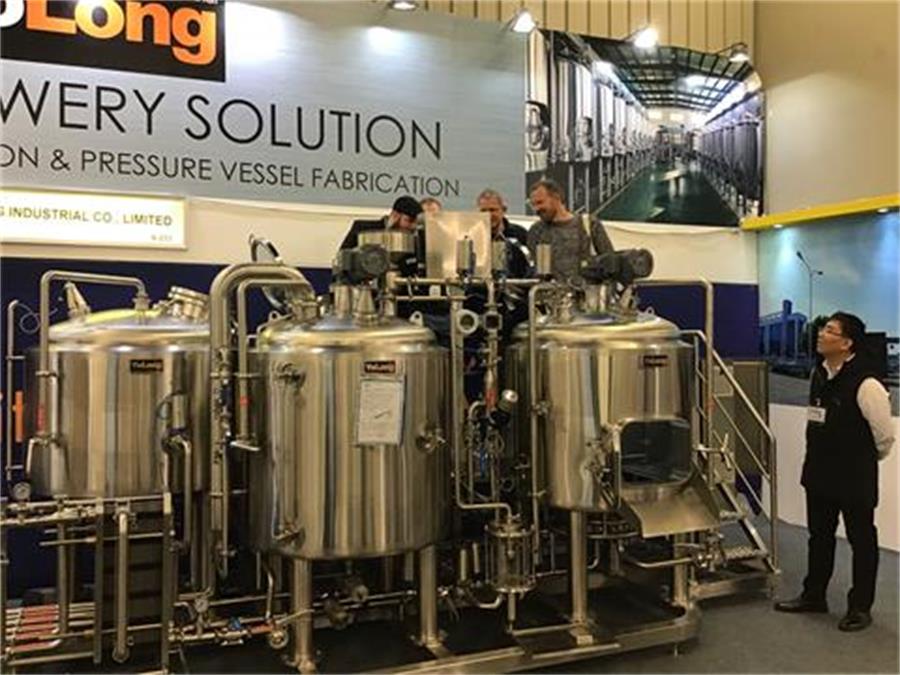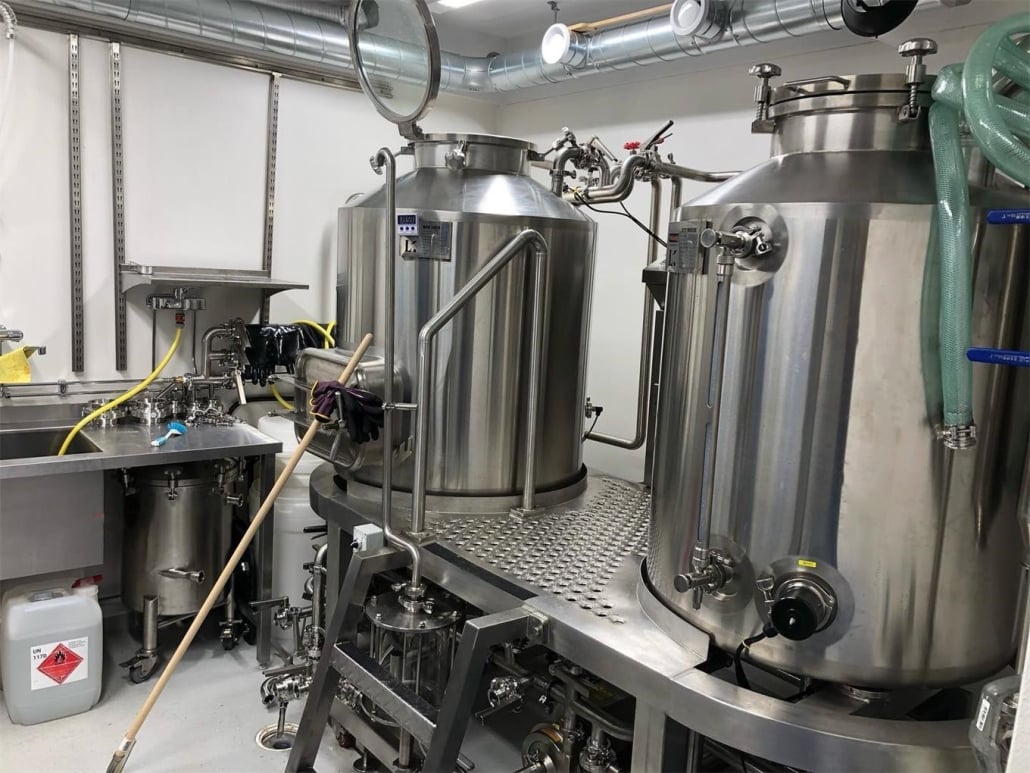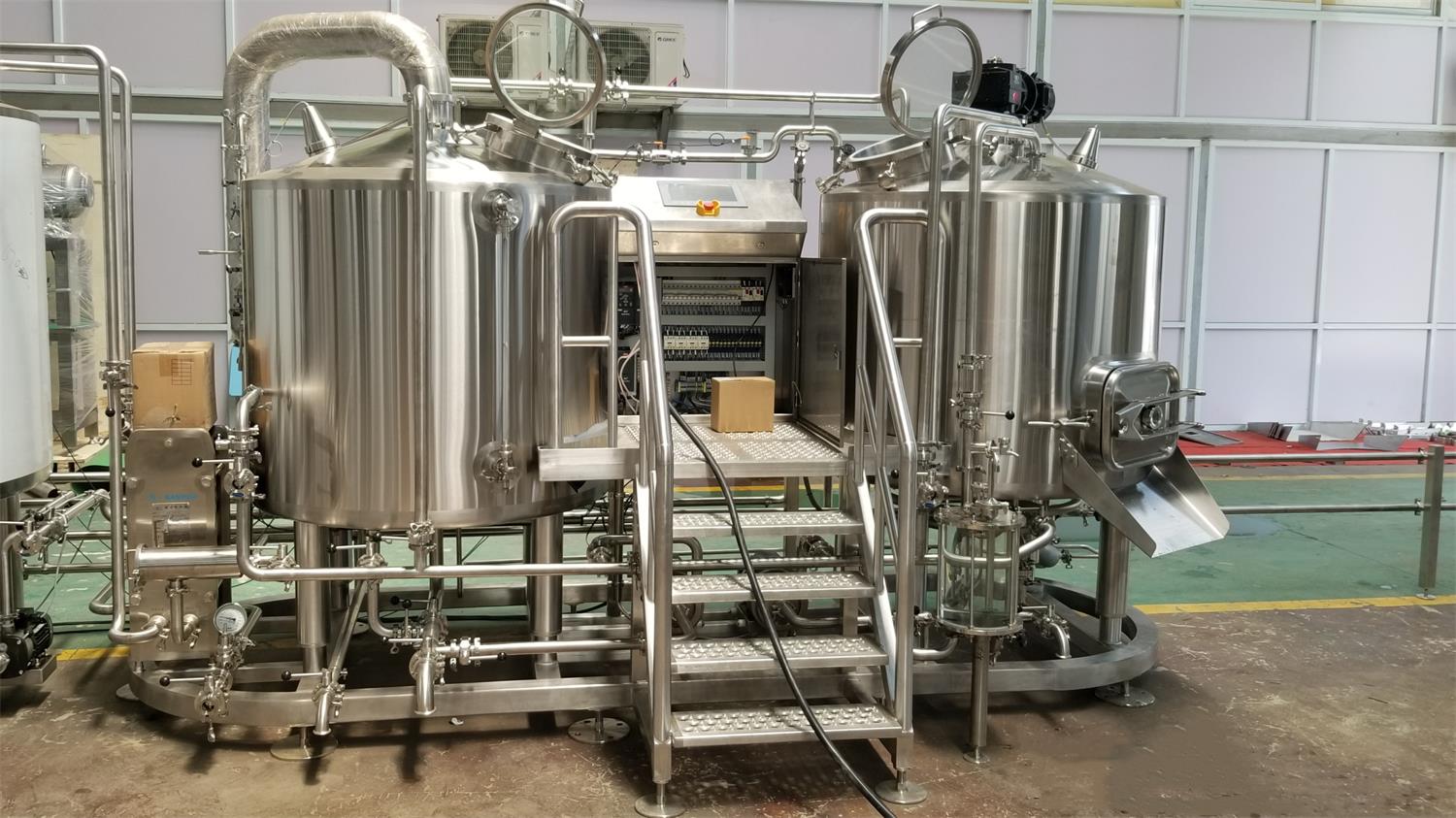Wine Equipment for Sale
Overview of Wine Equipment for Sale
Wine-making is an art that requires precision, patience, and the right tools. Whether you are a hobbyist or a professional vintner, having the appropriate wine equipment is essential to crafting high-quality wines. The wine-making process involves several stages, from crushing and fermenting to aging and bottling, each requiring specific equipment. This guide explores everything you need to know about purchasing wine equipment, including types, prices, suppliers, and tips on choosing the best products to suit your needs.
Guide to Wine Equipment: What You Need to Know
When venturing into the world of wine-making, you need to equip yourself with tools that are not only functional but also durable and efficient. The following sections will delve into the essential equipment, the brewing process, and important considerations like space, design, customization, and maintenance.

Essential Wine Equipment
Wine-making involves a variety of equipment, each serving a unique purpose. Here is an overview of the key equipment types:
| Equipment Type | Purpose | Details |
|---|---|---|
| Grape Crushers and De-Stemmers | Used to crush grapes and remove stems before fermentation. | Crushers and de-stemmers come in manual and motorized versions. Choose based on the scale of production. |
| Fermenters | Vessels where the fermentation process takes place, converting grape juice into wine. | Fermenters range from small plastic bins to large stainless steel tanks. Consider the size and material. |
| Presses | Extract juice from the grapes post-fermentation by applying pressure. | Available in hydraulic, pneumatic, and manual types. Choose based on efficiency and ease of use. |
| Wine Pumps | Used to transfer wine between containers during racking, filtration, and bottling processes. | Pumps vary in power and size. Consider the flow rate and the type of wine being produced. |
| Filtration Systems | Remove unwanted particles and sediment from wine, ensuring clarity and stability. | Filtration systems range from basic plate filters to advanced crossflow filtration units. Choose based on precision. |
| Aging Barrels | Used for aging wine, imparting flavors from the wood. | Oak barrels are the most popular, but stainless steel and plastic options are also available. Consider cost and flavor impact. |
| Bottling Equipment | Facilitates the filling, corking, and labeling of wine bottles. | Includes manual, semi-automatic, and fully automatic bottling lines. Choose based on production volume. |
| Lab Equipment | For testing pH, sugar levels, and other chemical properties of wine throughout the process. | Essential for ensuring wine quality. Includes hydrometers, pH meters, and titration kits. |
Understanding the Wine-Making Process
To select the right equipment, you must understand the wine-making process from start to finish. This will help you identify the tools you need at each stage and make informed purchasing decisions.
Crushing and Destemming
The first step in wine-making is crushing and destemming the grapes. This process separates the juice from the skins and stems, laying the foundation for fermentation. Crushers and destemmers are the go-to equipment for this stage, with options ranging from simple hand-cranked machines to sophisticated motorized units.
Fermentation
Once the grapes are crushed, the juice is transferred to fermenters. This is where the magic happens—the sugars in the juice are converted into alcohol by yeast. The choice of fermenter (plastic bins, stainless steel tanks, or oak barrels) will impact the wine’s flavor and characteristics.
Pressing
After fermentation, the wine is separated from the solids (skins, seeds, and pulp) using a press. The type of press you choose—hydraulic, pneumatic, or manual—affects the efficiency and the quality of the juice extracted.
Racking and Aging
Racking involves transferring the wine from one container to another, leaving sediment behind. This is done multiple times during the aging process, which can take place in barrels, tanks, or bottles. The type of aging vessel (oak, stainless steel, or plastic) can significantly influence the wine’s final flavor.
Filtration and Bottling
Before the wine is bottled, it undergoes filtration to remove any remaining particles. Bottling equipment, ranging from hand-operated machines to fully automated lines, is used to fill, cork, and label the bottles.
Factors to Consider When Choosing Wine Equipment
Choosing the right equipment involves more than just picking items off a list. Here are some key factors to consider:
| Factor | Details |
|---|---|
| Capacity | Determine the volume of wine you intend to produce. Equipment sizes vary, so choose based on your production goals. |
| Space and Layout | Consider the space available in your winery or home. Ensure your equipment fits well without overcrowding. |
| Design and Customization | Some equipment offers customization options. Consider if you need specific features tailored to your wine-making process. |
| Material and Durability | Opt for materials that are durable and easy to clean, like stainless steel or food-grade plastic. |
| Ease of Operation | Equipment should be user-friendly, especially if you are a beginner. |
| Maintenance Requirements | Consider the maintenance needs of each piece of equipment. Choose items that are easy to clean and maintain. |
| Cost and Budget | Wine equipment comes in a wide price range. Set a budget and choose equipment that offers the best value for money. |
Wine Equipment Suppliers and Price Range
Finding the right supplier is crucial to getting high-quality wine equipment. Here’s a look at some top suppliers and the price ranges for their products:
| Supplier | Products | Price Range | Additional Services |
|---|---|---|---|
| MoreWine | Full range of wine-making equipment from crushers to bottling lines. | $100 – $50,000+ | Installation, training, and customer support. |
| Winery Equipment Co. | Specializes in high-end fermenters, presses, and filtration systems. | $500 – $100,000+ | Custom design and international shipping. |
| Home Brew It | Offers a variety of home wine-making kits and small-scale equipment. | $50 – $5,000 | Online tutorials and community support. |
| GW Kent | Large selection of commercial-grade wine equipment including pumps and tanks. | $1,000 – $250,000+ | Leasing options and bulk purchase discounts. |
| St. Patrick’s of Texas | Known for durable wine barrels and bottling machines. | $200 – $30,000+ | Maintenance services and technical consultation. |
Installation, Operation, and Maintenance of Wine Equipment
Once you’ve purchased your equipment, proper installation, operation, and maintenance are key to ensuring longevity and efficiency. Here’s what you need to know:
| Aspect | Details |
|---|---|
| Installation | Some equipment, like fermenters and presses, may require professional installation. Consider space and ventilation. |
| Operation | Ensure that all operators are trained. Follow manufacturer instructions to avoid damage and ensure safety. |
| Maintenance | Regular cleaning and servicing are essential. Use recommended cleaning agents and perform periodic inspections. |
| Troubleshooting | Keep a manual or contact information for technical support handy for quick problem resolution. |
Choosing the Right Supplier: A Detailed Guide
Selecting the right supplier is as important as choosing the right equipment. Here’s how to make the best choice:
| Criteria | What to Look For | Why It Matters |
|---|---|---|
| Reputation | Look for suppliers with positive reviews and testimonials from other winemakers. | A good reputation indicates reliability and quality. |
| Product Range | Choose suppliers that offer a comprehensive range of products. | It’s convenient to get all your equipment from one place. |
| Customer Support | Evaluate the level of customer support, including after-sales service. | Good support ensures you can resolve issues quickly. |
| Customization Options | Some suppliers offer customized equipment. Consider this if you have specific needs. | Customization ensures your equipment is tailored to your process. |
| Price and Value | Compare prices but also consider the value offered, such as warranties and service packages. | Getting the best value ensures you’re not just saving money but also getting quality products. |
Pros and Cons of Different Wine Equipment Types
Not all wine equipment is created equal. Understanding the pros and cons of different types can help you make better purchasing decisions:
| Equipment Type | Advantages | Disadvantages |
|---|---|---|
| Manual Crushers | Affordable, easy to use, and perfect for small batches. | Labor-intensive and not suitable for large-scale production. |
| Motorized Crushers | Fast and efficient, ideal for medium to large-scale production. | More expensive and requires a power source. |
| Plastic Fermenters | Lightweight, easy to clean, and affordable. | May not last as long as stainless steel or oak, and can retain odors. |
| Stainless Steel Fermenters | Durable, easy to sanitize, and doesn’t affect wine flavor. | Higher initial cost and can be bulky. |
| Oak Barrels | Adds unique flavors and characteristics to wine. | Expensive, requires maintenance, and has a limited lifespan. |
| Automatic Bottling Lines | Highly efficient, reduces labor, and ideal for large-scale production. | Very expensive and requires significant space. |
Making the Final Decision: How to Choose the Best Wine Equipment
Choosing the right wine equipment involves balancing quality, cost, and your specific wine-making needs. Here’s a structured approach:
| Step | Details | Importance |
|---|---|---|
| Assess Your Needs | Consider the scale of production, type of wine, and your budget. | Ensures you only buy what you need, avoiding unnecessary costs. |
| Research and Compare | Look at different brands, read reviews, and compare features. | Helps you find the best value for money. |
| Consult Experts | Talk to other winemakers or consult with suppliers. | Provides insights that can help you avoid common pitfalls. |
| Consider Future Growth | Think about your long-term needs. Will your equipment still be suitable in a few years? | Saves you from having to upgrade or replace equipment too soon. |
| Test Before Buying | If possible, try out equipment or visit a supplier’s showroom. | Ensures the equipment meets your expectations in terms of ease of use and performance. |

FAQ
| Question | Answer |
|---|---|
| What is the most essential piece of wine-making equipment? | The fermenter is arguably the most essential, as it’s where fermentation, the critical stage of wine-making, occurs. |
| Can I use home wine-making equipment for commercial purposes? | While home wine-making equipment is fine for small-scale production, commercial operations require more durable, larger-scale equipment. |
| How often should wine equipment be cleaned? | Wine equipment should be cleaned thoroughly after each use to prevent contamination and ensure the best wine quality. |
| Is stainless steel better than oak for aging wine? | Stainless steel is durable and doesn’t influence the wine’s flavor, making it ideal for those who want to preserve the wine’s natural taste. Oak, however, imparts unique flavors and is preferred for certain wine styles. |
| How much should I budget for a small home wine-making setup? | A basic home wine-making setup can cost anywhere from $300 to $3,000, depending on the quality and type of equipment you choose. |
Conclusion
Investing in the right wine equipment is a crucial step toward producing quality wine, whether for personal enjoyment or commercial sale. By understanding the wine-making process, evaluating your needs, and carefully selecting your equipment, you can ensure a smooth and successful wine-making journey. Remember, the right tools not only make the process easier but also significantly enhance the quality of your final product.
Additional FAQs About Buying Wine Equipment
1) What material is best for long-term winery use: stainless, plastic, or oak?
- For core Wine Equipment, stainless steel (304/316) wins on hygiene, durability, and resale value; oak is for flavor/aging, plastic suits small-batch or temporary use.
2) How do I size pumps and hoses for racking and bottling?
- Target 1–1.5 tank turnovers/hour for gentle wine handling. Use food-grade hoses sized to pump outlet (commonly 1–2 in.) and include butterfly valves and sight glasses.
3) Is crossflow filtration worth the cost for small wineries?
- If you bottle >20,000 bottles/year or run multiple SKUs, crossflow can replace multiple filter steps, reduce consumables, and shorten bottling days; otherwise a plate/pad system may suffice.
4) What lab tools are “must-have” versus “nice-to-have”?
- Must-have: pH meter, hydrometer/refractometer, SO2 test (aeration-oxidation or ripper kit). Nice-to-have: bench-top spectrophotometer, dissolved oxygen meter, titratable acidity kit.
5) How should I plan power, drainage, and floors for new equipment?
- Provide dedicated GFCI circuits for pumps/packaging, trench drains with 1–2% slope, and non-slip, acid-resistant floors (epoxy or sealed concrete) to handle CIP and spills.
2025 Industry Trends in Wine Equipment
- Energy/water efficiency: Heat-recovery chillers, insulated tanks, and CIP reuse loops lower utilities 10–20%.
- Closed handling: DO control with inert gas blanketing and closed pump-overs expands beyond premium whites to protect aromatics across SKUs.
- Modular bottling: Semi-automatic monoblocks with smaller footprints serve boutique producers scaling output.
- Smart cellars: Wi‑Fi probes, tank-level sensors, and production ERPs link fermentation curves to work orders and inventory.
- Alternative vessels: Concrete eggs and OTR-managed polymer tanks used for texture without oak flavor; hybrid programs reduce barrel spend.
2025 Snapshot: Pricing and Operational Benchmarks
| Equipment/Metric | 2023 Avg | 2024 Avg | 2025 YTD | Notes/Sources |
|---|---|---|---|---|
| 5,000 L jacketed stainless fermenter | $7k–$12k | $6.8k–$11.5k | $6.5k–$11k | Pricing varies by ports/finish |
| Pneumatic press (20–30 hL) | $18k–$35k | $17k–$33k | $16k–$32k | Membrane, cycles, automation |
| Crossflow filter (3–6 m²) | $35k–$70k | $33k–$66k | $32k–$64k | Throughput ~500–1,000 L/hr/m² |
| Semi-auto bottling line (1,000–2,000 bph) | $45k–$110k | $42k–$105k | $40k–$100k | Rinse/fill/cork/cap/label modules |
| Water use (hl water/hl wine, cellar ops) | 3.5–5.0 | 3.2–4.6 | 3.0–4.2 | CIP reuse/optimized rinses |
| DO at bottling (ppb, still wines) | 80–150 | 60–120 | 50–100 | Closed handling, inerting |
Reference hubs:
- Australian Wine Research Institute (AWRI): https://www.awri.com.au/
- American Society for Enology and Viticulture (ASEV): https://www.asev.org/
- DOE Better Plants/Better Buildings: https://betterbuildingssolutioncenter.energy.gov/
Latest Research Cases
Case Study 1: Closed Handling Cuts SO2 and Improves Aromatics (2025)
Background: A mid-size winery (250,000 L/year) reported aroma fade and rising SO2 additions in Sauvignon Blanc and Riesling.
Solution: Added inert gas blanketing to tanks, DO meters at critical points, sealed pump-overs, and nitrogen sparging at bottling in existing Wine Equipment.
Results: Transfer DO reduced to 30–60 ppb; average free SO2 additions dropped ~15–20%; panel detected stronger varietal thiols at 90 days. Sources: AWRI oxygen management guides; ASEV conference proceedings.
Case Study 2: Modular Bottling Line to Reduce Changeover Losses (2024)
Background: Boutique producer with 8 SKUs suffered 12–15% downtime on bottling days.
Solution: Implemented a compact, semi-automatic monoblock with quick-change parts, in-line QC (fill-level vision), and nitrogen tunnel.
Results: Changeover time cut from 55 to 22 minutes; dissolved oxygen at fill decreased ~25%; annual labor hours reduced ~12%. References: OEM application notes; AWRI bottling best practices.
Expert Opinions
- Dr. Anita Oberholster, UC Davis Cooperative Extension Specialist in Enology
Viewpoint: “Prioritize temperature and oxygen control in core Wine Equipment; these two variables drive stability and flavor integrity.” - Jamie Goode, Wine writer and scientist (Wine Anorak)
Viewpoint: “Concrete and polymer vessels can add texture without oak flavor—useful tools when building mouthfeel with restrained aromatics.” - Clark Smith, Winemaker and author of “Postmodern Winemaking”
Viewpoint: “Process control beats gadgetry. Invest in pumps, valves, and analytics that preserve wine quality at every transfer.”
Practical Tools and Resources
- AWRI Knowledge Base: Fermentation temp/oxygen, bottling DO — https://www.awri.com.au/
- ASEV Research Library — https://www.asev.org/
- UC Davis Extension (facility design & sanitation) — https://extension.ucdavis.edu/areas-study/viticulture-enology
- Winery calculators (OTR, SO2, cold stability) — within AWRI resources
- ERP/production tools for wineries: InnoVint (https://www.innovint.us/), Vintrace (https://www.vintrace.com/)
- Equipment vendors with technical libraries: GW Kent (https://www.gwkent.com/), MoreWine Pro (https://morewinemaking.com/)
Last updated: 2025-09-28
Changelog: Added 5 targeted FAQs; 2025 industry trend snapshot with benchmark table; two recent winery case studies; expert viewpoints; curated tools/resources for Wine Equipment selection and operation
Next review date & triggers: 2026-03-31 or earlier if key equipment pricing shifts >10%, AWRI/ASEV publish new oxygen/packaging guidance, or DO/water-use benchmarks materially change
Share this entry
Interested in learning more about Brewing Systems including additional details and pricing information? Please use the form below to contact us!
YOLONG BREWERY EQUIPMENT FAQS
- Commercial Brewery / Craft Brewery / Microbrewery / Nanobrewery
- What is The Difference Between Craft Beer and Industrial Beer?
- The Bespoke Differences In Custom Brewing Systems
- Everything You Need to Know About Kettle Souring
- How to Choose Brewing Equipment for Your business?
- How To Choose The-Best Partner To Build Your Commercial Microbrewing System?
- Two Detection Sensors That You Need To Use In Your Brewhouse System
- Remote Control Applications in Brewing Equipment/How does it work?
- How To Clean Your Brand New Brewery Tanks?

